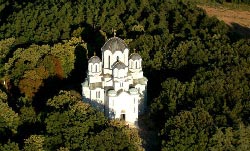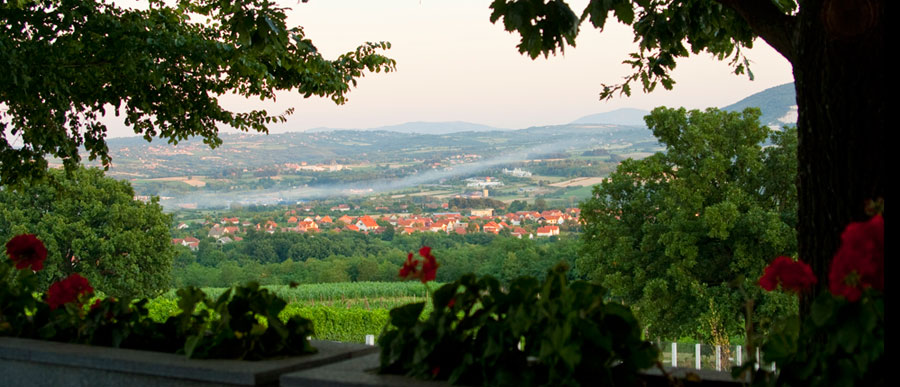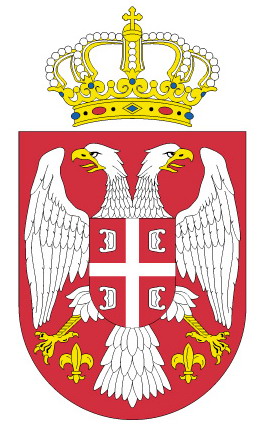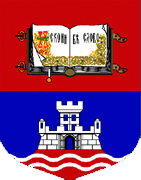Tour of Šumadija
Šumadija (read: Shumadia) is a hilly region of Serbia south of Belgrade regarded as the heart of Serbia. There are two main destinations of these tour: Oplenac Royal Mauseleum and winery Vrbica. Oplenac is the historic place of the Serbian dynasty Karađorđević who ruled Serbia interchangeably with the competing family Obrenović, after the Ottoman empire was expelled from Serbia, and before the World War II during which the communist party won the power. We will conclude the long day with the wine/brandy tasting, and the dinner at the restaurant of winery Vrbica in the nearby Aranđelovac.
Oplenac

Oplenac Royal Mausoleum
Oplenac Royal Mausoleum is the church where six generations of the Karađorđević family have been buried. Apart from the two tombs inside the church (Karađorđe’s in the southern apse; and King Peter's I in the northern apse), there are 20 other members of the Dynasty whose eternal place of rest is in this Mausoleum. It is also known as the St. George Church. Oplenac Royal Mausoleum is decorated with copies of frescoes from 60 Serbian medieval monasteries. It is accompanied with the museum on life and work of Karadjordje who was the leader of the First Serbian Insurrection, and the Church of st. Mary which was Karadjordje's endowment. Also, king's wine cellars belong to the same complex, king's villa and several other buildings.
Đorđe Petrović - Karađordje ("kara" means black in Turkish), founder of the dynasty, stood against Turks and ruled Serbia after the Turks were defeated. Turks were ruling Serbia for 500 years (since 1381 until around 1820). Karađorđe had settled in Oplenac, built vineyards and orchards, and established the defense of the nearby Topola town. His son Alexander built new buildings and renewed his father’s vineyards and orchards. It was not until the arrival of King Peter I of Serbia that this place got its true importance.
Peter I, upon assuming Royal Duties in 1903, chose a spot 337 metres (1106 ft) on the top of Mali Oplenac for the location of his St. George Church. The location was measured by geodesy experts; so the altar would face east according to Orthodox tradition. In 1907 the cornerstone was laid, and the Charter dedicated to St. George was placed in the foundation. The winning prize for the tender was given to architect Nikola Nestorović. After a long and animated expert discussion, primarily regarding the demand for the monumentality of the Serbian-Byzantine style, and due to the King’s own displeasure with the proposed solution, another tender in 1909 was launched. The committee was made up with basically the same previous members (Mihailo Valtrović, Andra Stevanović, and architect Konstantin A. Jovanović, who replaced Dragutin Đorđević from the previous committee). The committee awarded first prize to the young architect Kosta J. Jovanović.

King Peter I
King Peter I who built the Oplenac Mausoleum was probably the most respected and loved leader among the Serbian people. He became King of Serbia when he was 60 faithful to the freedom-loving formation of his youth. He translated into Serbian John Stuart Mill’s work “On Freedom” and published it, which he later put into practice when he became King. He established freedom of the press, civil liberties and parliamentarism, all of which reached their peak during his reign. He was a man with frisky spirit, volunteer in the French-Prussian war (1870-1871), and an insurgent in the 1875 Uprising in Bosnia-Herzegovina against Ottoman occupation, under the name of Peter Mrkonjic. His achievement as king was that Serbia was viewed as the pedestal of the Southern Slavs. After six years of war (1912-1918), he became the first King of the Serbs, Croats and Slovenes. When he returned to his homeland in 1903, he rushed to Topola, where he had not only the memories of his parents and his home, but also of his childhood. This King-Democrat stayed in Topola and spent his days there in the simplest way, with common people. He spent a lot of time with his childhood friends and they reminisced their adventures. He was at that time known as the “farmer King” in the true sense of the word. Decades spent abroad (1858-1903), living in various European countries, had only strengthened his desire for the homeland. The most vivid expression of longing for the homeland was seen when he refused an offer, as an old man, to leave the country which was about to face Austro-Hungarian occupation that started World War I. He said: “You don’t know what it’s like to be without one’s own people!” Having said that, he went through the Albanian Golgotha. Albanian Golgotha was a winter retreat of the Serbian army through the Albanian mountains, while it was chased by the superior Austrio-Hungarian army, and attacked by the Albanian troops as well. Around 110000 soldiers reached the Albanian coast, where the French navy was waiting for them and shipped them to the island of Corfu in Greece, while 70000 soldiers lost their lives in the montains of Albania. After the Serbian army recovered, it won the war led by King Peter I. With the intention to build his foundation at Oplenac, King Peter decided to build an estate on this hill, where today his foundation is, the historic and memorial grounds at Oplenac, which include: the St. George Church (the Mausoleum of the Serbian Royal Family), King Peter House, villas and the Foundation House (Hotel).
Winery Vrbica
More than 150 years ago, the slopes of Venčaci, Orašac and Vrbica hills were covered with vineyards. According to the first record from 1859, Vrbica had 84 acres under vines. Fifty years later, the famous Venčančka winegrowing cooperative was founded, unique in the Balkans, that had been producing bubbly wines as well between two world wars. These were very good times for grape growers and winemakers in Vrbica. Even Eleanor Roosevelt visited the cellars and tried the famous wine of the region at the time. These brilliant times of Vrbica were over, decades of decay began, and Vrbica fell into oblivion.
Recently, in 2003, on the same slopes new vineyards sprung up, and Vrbica continues its long tradition of grape growing and wine making. Today winery Vrbica has a dozen acres of vineyards and the production of thirty thousand gallons of wine. Farmers grow high quality wine varieties of white and red grape originally from France. Representatives of red grape varieties are Merlot, Cabernet Sauvignon, and representatives of white grape varieties are Riesling Rhine, Sauvignon Blanc and Chardonnay.

Winery Vrbica
There is a nice restaurant Tarpoš in the middle of vineyard Vrbica. It has a beautiful view of a typical Šumadija scenery. Restaurant Tarpoš serves the Serbian traditional food, as well as the international food. Importantly, it serves the Serbian plum brandy, Šljivovica, that Šumadija is famous for. Other types of brandy will be also available for tasting, like Lozovača (made of grapes), Dunjevača (made of quince)... Serbia's orchards, fields, and vineyards produce some of the highest quality fruit anywhere. Enjoying one of Europe's best microclimates for fruit production and an agricultural tradition that dates back centuries, growers in Serbia take pride in harvesting fruits with exceptional color and flavor. In an era of giant corporate farms, where flavor is often sacrificed for uniform size and appearance, Serbia stands out in its commitment to quality. In fact, most of the fruits in Serbia is still grown on small, family owned farms. That's why so many outstanding heritage fruit varieties still survive in Serbia, like the intensely flavorful Budimka apples, Krokan grapes, and Vineyard peaches. Growers in Serbia still believe that the best fruit is allowed to ripen naturally in the summer sun. With nearly six million hectares of agricultural land and one of the continent's most ideal microclimates, Serbia has become known as the fruit basket of Europe.












